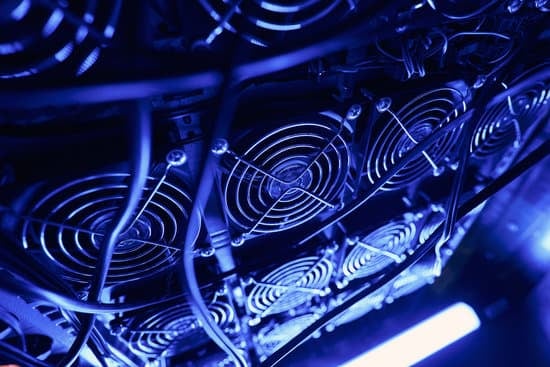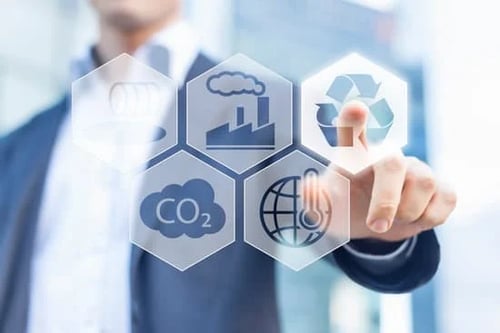Sustainable Cooling Solutions for Data Centers: From Air to Liquid Cooling

Data centers have always been challenged to keep their spaces cool and protect their valuable infrastructure from overheating but increasing digital demands have led to an exponential increase in heat generation, making it imperative to find sustainable cooling solutions.
“Data centers are one of the most energy-intensive building types, consuming 10 to 50 times the energy per floor space of a typical commercial office building. Collectively, these spaces account for approximately 2 percent of the total U.S. electricity use, and as our country's use of information technology grows, data center and server energy use is expected to grow too,” says the U.S. Department of Energy.
Traditional mechanical air cooling (using fans, refrigeration systems, and dehumidifiers) is struggling to keep hardware resources from overheating: forced air is limited to about 25 kilowatts per rack, but AI and other emerging tech are requiring design loads of up to 75 kilowatts per rack.
“This is unsustainable from an environmental, cost, and performance perspective,” Joe Capes, chief executive officer of cooling systems developer LiquidStack, told Information Week.
Cooling Accounts for Nearly Half of Data Center Power Load
Information Week reported in March that the data center industry is getting hotter in more ways than you might think.
“Cooling can require up to nearly 40 percent of a data center's total power load,” Dave Sterlace, strategic account manager, data centers, for power systems firm Hitachi Energy, told the magazine. “It makes a great target for a more sustainable approach.”
Capacity magazine reported last November that data centers are estimated to be responsible for up to 3 percent of all global electricity consumption today and that number is projected to reach 4 percent by 2030.
The magazine estimated that the average hyper-scale data center consumes 20 to 50 MW annually, enough electricity to power 37,000 homes.
“The data center industry is growing rapidly as more and more applications require compute and storage, driving a corresponding rapid increase in energy and water use in data center facilities,” Giordano Albertazzi, chief operating officer and president, Americas at Vertiv, told Capacity. “The industry has understood that pursuing energy and water efficiency aggressively is key for future success and survival.”
The Need for Data Center Sustainable Cooling Solutions
Exploring data center sustainable cooling solutions is no longer a luxury with the rising energy costs and sustainability demands around the globe.
The Uptime Institute Data Center and IT Spending Survey 2022 asked colocation and enterprise data centers in which area was their organization’s greatest unit cost increase over the past year and power costs were overwhelmingly the top answer.
The Institute said that colocation operators were passing down some significant increases in energy costs to their customers and while energy prices may dip from record highs of 2022 this year, they are likely to remain well above the average levels of the past two decades.
Some of the key reasons why sustainable cooling solutions for data centers must be implemented soon:
-
Energy Efficiency: Data centers consume massive amounts of energy, and cooling constitutes a significant portion of that energy consumption. By implementing sustainable cooling solutions, data centers can significantly improve their energy efficiency, leading to reduced operational costs and lower carbon emissions.
-
Environmental Impact: The environmental impact of data centers is a growing concern. The high energy consumption and carbon emissions associated with cooling systems contribute to resource depletion. Sustainable cooling solutions, such as those leveraging renewable energy sources, can help mitigate the environmental impact of data centers and foster a more sustainable industry.
-
Heat Density and Server Densification: With the advancement of technology, data centers are becoming increasingly dense in terms of heat generation and server densities. Traditional cooling methods may struggle to adequately cool these high-density environments, leading to performance issues, increased risk of equipment failure, and inefficient use of space.
-
Cost Optimization: Cooling represents a significant portion of the operational expenses of data centers. By implementing sustainable cooling solutions, data center operators can optimize their cooling infrastructure, reducing energy consumption and associated costs.
-
Regulatory Compliance: Governments and regulatory bodies are placing increasing emphasis on energy efficiency and environmental sustainability. Data center operators must comply with regulations and standards related to energy consumption and carbon emissions.
-
Reputation and Competitive Advantage: Customers, stakeholders, and investors are increasingly conscious of sustainability issues. By implementing sustainable cooling solutions, data center operators can enhance their reputation as responsible organizations. This can provide a competitive advantage in attracting customers and business partners who prioritize sustainable practices.
Sustainable Option to Cool Data Centers: Liquid Cooling
To understand sustainable options to cool data centers, let’s examine the most common method used: air cooling, which uses ambient air to dissipate heat in the building.
Air cooling has been in use since the early days of data centers. It was the primary cooling method employed when data centers were first established.
This method is initially cost-effective as it is easy to implement and requires less unfractured than alternative methods, but air cooling is less energy-efficient and has limitations in handling high-density racks and large-scale deployments.
The most popular sustainable alternative to air cooling is liquid cooling, which Data Center Dynamics calls a new, low-impact system to limit the active movement of air over the servers – eliminating the need to cool the entire data hall and reducing energy consumption and cost.
Liquid cooling involves circulating a liquid coolant through specialized systems to extract heat from servers and other equipment.
There are different types of liquid cooling methods, such as direct-to-chip cooling and rack-based liquid cooling. Here's a generalized overview of how liquid cooling works:
-
Heat Transfer: The liquid coolant absorbs heat from the servers, typically through direct contact with heat-generating components or by passing through heat exchangers attached to the servers.
-
Liquid Circulation: The heated coolant is circulated through a closed-loop system using pumps, transferring the absorbed heat away from the servers.
-
Heat Dissipation: The heated coolant is then passed through a cooling mechanism, such as a heat exchanger or a cooling tower, where the heat is dissipated into the surrounding environment.
-
Cooling Infrastructure: Additional infrastructure, including pipes, coolant reservoirs, and cooling units, is required to facilitate the liquid cooling process.
Exploring Other Data Center Sustainable Cooling Methods
Here are some of the other sustainable cooling methods that data centers are employing around the world:
-
Immersion Cooling: Immersion cooling takes a unique approach by submerging servers and their components in a non-conductive liquid. The liquid extracts heat directly from the components, providing efficient cooling. Immersion cooling can accommodate high-density deployments and is highly effective in cooling but will require specialized equipment – which may have higher installation costs and can limit accessibility for maintenance and hardware updates –that requires careful handling of the submerged servers.
-
Direct-to-Chip Cooling: Direct-to-Chip Cooling, also known as chip-level or micro-level cooling, involves directly cooling the heat-generating components, such as processors or integrated circuits, using liquid cooling techniques. This technology absorbs heat at each server’s CPU via a metal plate attached to the top of the chip. This cooling method is primarily utilized in high-performance environments and specialized applications that demand precise temperature control.
-
Direct Evaporate and Indirect Evaporative Cooling: This technology harnesses the capabilities of evaporative cooling in direct or indirect formats. Condair explains that indirect evaporative cooling, fresh air from outside is brought into ventilation ductwork and met with humidity in a dedicated air handling unit. This airstream with a higher moisture content achieves an optimal temperature and just the right amount of hydration before being dispersed indoors. In indirect evaporative cooling, the air exchange process is forgone. Instead, outside air is brought through ventilation to lower indoor temperatures without mixing the two air streams. Fresh outdoor air is run through the evaporative humidifier and a heat recovery unit and then exhausted without any mixing. Condair says this method is popular in data centers where indoor temperatures and electrostatic discharge potentialities need to be tightly managed.
-
Geothermal Cooling: Data centers situated near geothermal energy sources can harness the natural cooling properties of the earth for efficient cooling. Geothermal cooling solutions have been utilized in data centers for over a decade. However, their implementation is contingent on the availability and accessibility of suitable geothermal resources in the vicinity of the data center location.
“As enterprises design next-generation energy-efficient data centers, they will need to involve all relevant stakeholders, including the data center IT management team, the facilities team, design engineers, and general contractors,” Drew S. Thompson, associate vice president, data centers and mission-critical facilities solutions, at engineering firm Black & Veatch, told Information Week.
Subscribe to News
Recent posts
LATEST NEWS
Tuesday April 16, 2024
Wednesday December 14, 2022







